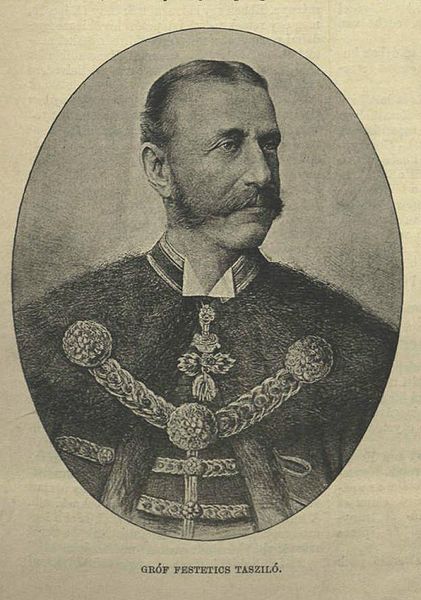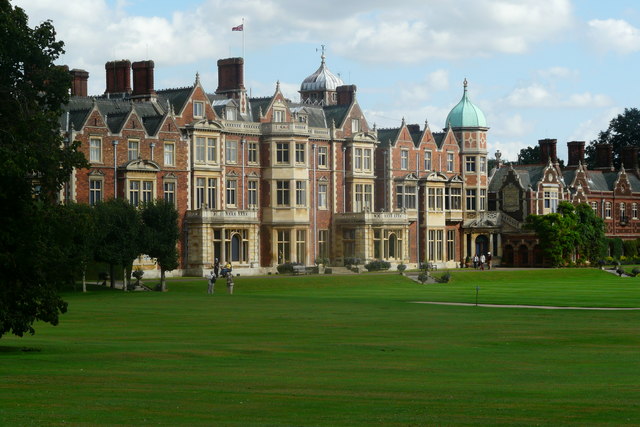by Susan Flantzer © Unofficial Royalty 2013

photo: Wikipedia
The Romanov Emperors of Russia often married princesses of German principalities and grand duchies and Alexander I, Emperor of All Russia was no different. Princess Louise Maria Auguste of Baden was born in Karlsruhe, Grand Duchy of Baden, now in Baden-Württemberg, Germany, on January 24, 1779. She was the third of the six daughters and the third of the eight children of Karl Ludwig, Hereditary Prince of Baden and Amelia Frederica of Hesse-Darmstadt.
Louise, herself an empress, had seven siblings which included two queens, a grand duchess, a duchess, and a grand duke. Collectively, Louise’s siblings are ancestors of a number of royal families.
- Amalie (1776 – 1823), twin of Karoline, unmarried
- Caroline, Queen of Bavaria (1776 – 1841), twin of Amalie, married King Maximilian I Joseph of Bavaria (second wife), had seven children, through two of their daughters they were the maternal grandparents of Emperor Franz Joseph I of Austria and his wife Elisabeth of Bavaria (Sisi)
- Frederica, Queen of Sweden (1781 – 1826) married King Gustav IV Adolf of Sweden, divorced in 1812, had five children
- Marie, Duchess of Brunswick-Wolfenbüttel (1782 – 1808) married Friedrich Wilhelm, Duke of Brunswick-Wolfenbüttel, had two sons, Marie died due to childbirth complications after delivering a stillborn daughter
- Karl Friedrich (1784 – 1785), died in infancy
- Karl I, Grand Duke of Baden (1786 – 1818), married Stéphanie de Beauharnais, daughter of Claude de Beauharnais and adoptive daughter of Emperor Napoléon I, had five children, Karl and Stéphanie are the ancestors of the royal families of Belgium, Luxembourg, Monaco, Romania, Yugoslavia, and two branches of the House of Habsburg
- Wilhelmina, Grand Duchess of Hesse and by Rhine (1788 – 1836), married her first cousin Grand Duke Ludwig II of Hesse and by Rhine, had five children including Marie who married Alexander II, Emperor of All Russia; Wilhelmina and Ludwig were the great-grandparents of both Nicholas II, Emperor of All Russia and his wife Alix of Hesse and by Rhine (Alexandra Feodorovna)
Catherine II (the Great, Empress of All Russia) was considering candidates for the bride of her eldest grandson Alexander and was favorably impressed by Louise, who was 12 years old at the time. Louise, along with her younger sister Frederica, went to St. Petersburg, Russia in the fall of 1792. Empress Catherine was enchanted with the young princess and Louise was attracted to the tall, handsome Alexander. Louise stayed in Russia so that she could learn the Russian language and convert to Russian Orthodoxy. She exchanged her birth name for Elizabeth Alexeievna and became a Grand Duchess of Russia. The couple was formally betrothed in May 1793 and the wedding occurred on September 28, 1793. Elizabeth Alexeievna looked resplendent with the diamond-studded Order of St. Andrei on her silver brocade gown. The bride was fourteen and the groom was fifteen.

Alexander I circa 1801; Credit – Wikipedia
Elizabeth Alexeievna and Alexander’s young age and lack of experience caused them to become overwhelmed with expectations that they could not fulfill. Court intrigues confused and frightened Elizabeth Alexeievna and Empress Catherine’s own lover attempted to seduce the young Grand Duchess. She felt alone in a strange world, especially after her sister Frederica returned to Baden and felt comfort only with her husband. Less than six months after her marriage, Elizabeth Alexeievna wrote to her mother, “Without my husband, who alone makes me happy, I should have died a thousand deaths.”
Empress Catherine II died in 1796, disappointed that her eldest grandson and his wife had not produced a son, and Alexander’s father Paul became Emperor. Elizabeth Alexeievna did not like her father-in-law or his policies and avoided his court as much as possible. Alexander and Elizabeth Alexeievna’s marriage started to falter and she sought affection from her husband’s friend Polish Prince Adam Czartoryski, a Polish noble. In 1799, Elizabeth Alexeievna gave birth to a daughter Maria Alexandrovna, who had dark eyes and dark hair like Prince Adam Czartoryski and unlike the blond-haired and blue-eyed Elizabeth Alexeievna and her husband. Sadly, the child died when she was 13 months old.

Prince Adam Czartoryski; Credit – Wikipedia
In 1801, the behavior and policies of Emperor Paul led to a conspiracy to overthrow him. Paul was assassinated and his eldest son became Emperor Alexander I. Elizabeth Alexeievna fulfilled her duties as Empress, but by this time their marriage was really one in name only. Alexander started a long-term affair in 1803 and Elizabeth Alexeievna resumed her affair with Prince Adam Czartoryski. This affair lasted until Elizabeth Alexeievna began a new affair with Captain Alexis Okhotnikov. In 1806, Elizabeth Alexeievna gave birth to another daughter, Elizabeth Alexandrovna, who died of an infection when she was 17 months old. Rumors circulated that Elizabeth Alexandrovna was really the daughter of Alexis Okhotnikov. In 1807, Alexis Okhotnikov was killed and suspicions arose that either Emperor Alexander I or his brother Grand Duke Konstantin Pavlovich had ordered him killed.

Elizabeth Alexeievna in 1807; Credit – Wikipedia
Although the death of Elizabeth Alexandrovna brought Alexander and Elizabeth Alexeievna temporarily closer, they had no more children. In 1819, Alexander became very involved in religious mysticism, ended his long-term affair, and somewhat reconciled with his wife. By 1825, Elizabeth Alexeievna’s health was suffering due to lung problems and the doctors recommended getting away from the harsh climate of St. Petersburg. Alexander and Elizabeth Alexeievna relocated to the city of Taganrog, Russia by the Sea of Azov where they stayed in a modest house. In November of 1825, Alexander returned to Taganrog after visiting Crimea. He had a cold, which developed into typhus. On December 1, 1825, he died in Elizabeth Alexeievna’s arms in their home in Taganrog. Elizabeth Alexeievna survived him by five months. While traveling back to St. Petersburg for her husband’s funeral, she felt so sick that had to stop at Belev in Tula Province, Russia. On the morning of May 16, 1826, Elizabeth Alexeievna’s maid went to check on her and found her dead in her bed of heart failure at the age of 47. Elizabeth Alexeievna and her husband were buried at the Peter and Paul Cathedral in St. Petersburg.

Tombs of Emperor Alexander I and Empress Elizabeth Alexeievna, Photo: Wikipedia
This article is the intellectual property of Unofficial Royalty and is NOT TO BE COPIED, EDITED, OR POSTED IN ANY FORM ON ANOTHER WEBSITE under any circumstances. It is permissible to use a link that directs to Unofficial Royalty.
Romanov Resources at Unofficial Royalty






















